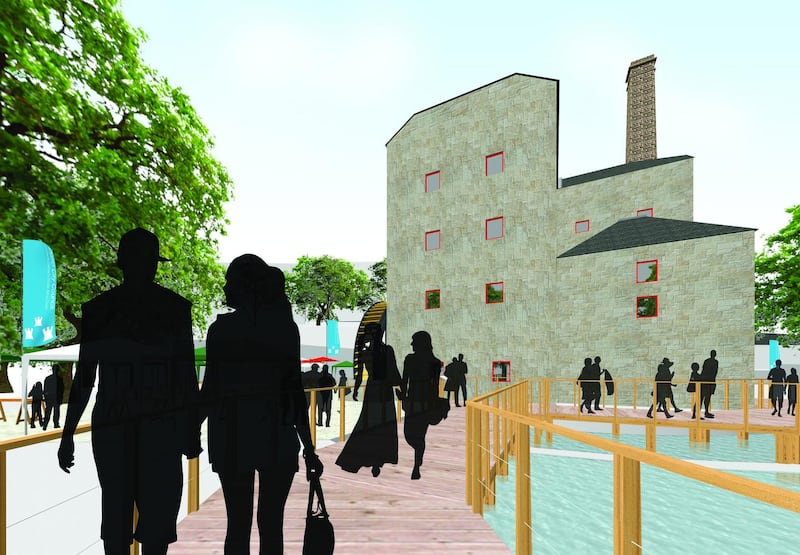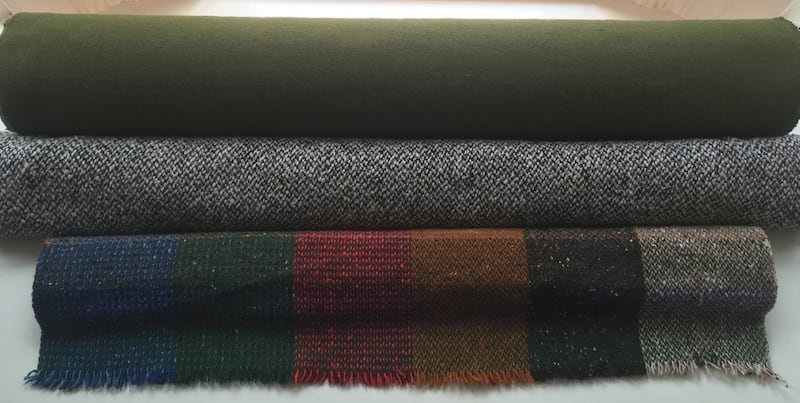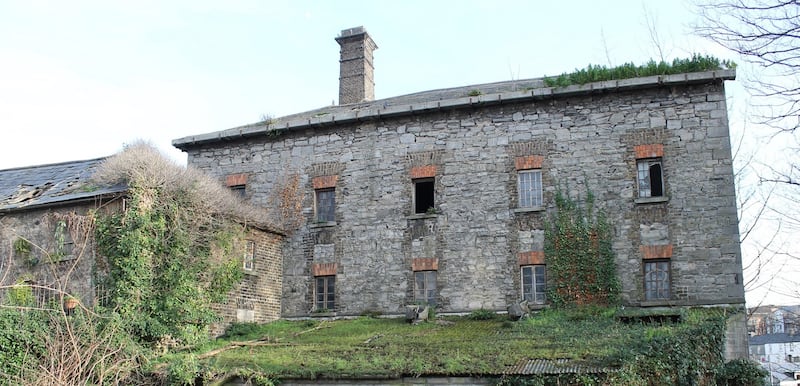Building work will soon begin on a significant project in Dublin 8: the restoration of the historic Kilmainham Mills in Rowserstown Lane.
The mill, which ground corn and later made and finished fabric for international fashion designers and soft furnishings, was purchased by Dublin City Council (DCC) in 2018 following a long campaign by local residents to save it from demolition and unwanted development.
Project manager Darragh Cunningham of DCC reckons that, when completed, the restoration will be “a game changer in terms of visitor attractions. From a tourist and economic point of view this will really complement Kilmainham Gaol, IMMA and the Memorial Gardens opening up another tourist attraction in the area.”

A major industrial heritage site on the banks of the river Camac, its high brick chimney stack testifies to the craftsmanship of stone masons at the time. It is believed to be the only largely unaltered early 19th century flour mill remaining in Dublin and probably the last intact fulling mill, incorporating finishing processes, on the island of Ireland. It was occupied continuously from at least the 16th century until 2000.
Rowserstown Lane has been the site of a mill since the middle ages, so the history goes back even further. When the restoration is completed, it will have many stories to tell about families, industry and fashion.
Art and design
One person with a particular personal and professional interest is art, design and fashion historian Sara Donaldson, a senior lecturer in visual culture at Griffith College. She is a direct descendant of the family who owned and ran Kilmainham Mills as a cloth finishing company for over sixty years and where three generations of her family lived in the manager’s house within the mills.
Her archival material reveals that in 1904 a Yorkshire man, Charles Bates, converted the mill from flour and corn processing to cloth finishing, installing machinery imported from his native Huddersfield to carry out specialised techniques for the finishing processes of scouring (cleaning), shrinking, tentering (stretching) and waterproofing.

It was Donaldson’s great-grandfather, Harry Archer, a trained cloth finisher like Bates, initially employed at a tweed mill in Lucan, who became owner and managing director of Charles Bates when ownership passed.
The firm remained in his family for more than 60 years as the only independent cloth finishing mill in the State. Its clients included Avoca Handweavers, Aer Lingus whose staff uniforms designed by Irene Gilbert and Neili Mulcahy were made from tweed and all the major Donegal tweed manufacturers who sent their cloth to the mill for finishing before delivery to couture designers, tailors and department stores in Ireland and abroad.
“What is so exciting for me is the connection with fashion,” says Donaldson “and the social, economic and textile milieu in which the Mill operated. The ledgers from the ’50s and ’60s show the extent of their business, but then in the advent of fast fashion and shopping centres, you can see the decline.”
Colourful tweeds
In 1973, Kilmainham Mills was purchased by John O’Loughlin Kennedy and his sister Noreen who had a shop in Anne’s Lane called The Weaver’s Shed, famous for its handwoven, colourful Irish tweeds. They ran it for over a decade. When their company went into liquidation it was taken over by Damien Shine, a teacher who had grown up in the area and wanted to save it from demolition and the dispersal of the machinery.
Shine came with his wife and family in 1984, restored the mill, stables and house and built up a flourishing textile finishing business with some handweaving, dyeing and manufacturing. His many clients included Karl Lagerfeld in Paris, Harrods and Joseph in London, Barneys and Nieman Marcus in New York and in Ireland fashion designers John Rocha, Lainey Keogh and Paul Costelloe. Costelloe remembers the tweed woven there as "very homespun, simple and understated".

In the late 1980s, Shine remembers costume designer Joan Bergin taking over part of the building, and films set there – In the Name of the Father, Michael Collins and Frankie Starlight. At the time he was making all the seating fabrics for nearly every major airline in the world but computer cutting systems were not fine enough to deal with ageing machinery and the layout of the mills was not conducive to modern day finishing.
His main client, Botany Weavers, invested in another company “and it is amazing how successful they have become under Jonathan Hackett and David Lawson”, says Shine. Efforts to protect the Kilmainham Mill structure failed when lender, the EBS, pulled out due to the financial crash.
“We were left high and dry. But I am delighted now that it is being restored,” Shine says.

Irish craft guilds
Among the ambitious plans outlined by Cunningham is the creation of a museum on the ground floor “with the best of modern technology to tell the story”, and members of Irish craft guilds to be located over five floors where visitors can not only observe different crafts being made but will also have an opportunity to participate.
“So it will be very immersive and a hands-on experience with things to do as well as see. These ideas have come from consultation with the multidisciplinary design team and local residents from the Save Kilmainham Mill Campaign. We want it to be a fun, vibrant happy place that will add to the local area and its benefit to the economy will be huge,” says Cunningham.
Two new entrances are envisaged, as well as a river walk along the Camac “so that the Camac will also become part of the visitor experience”. Funds for the restoration will need to be raised from state bodies but Cunningham is confident that this can be achieved given DCC’s commitment to the project.
Local resident and architect Angela Rolfe is full of praise for the Save Kilmainham Mills campaign schools initiative, telling local children about the history of the mills to stress its importance and win local influence.
“It is one of the few places where there will be a direct relationship with the only remaining mill within the city and the river Camac, which divides Kilmainham and Inchicore – the river is there but you don’t see it. It has a rich history from a social, economic and geographic point of view. It may take a long time [to complete the project], but everything worthwhile is worth waiting for. It is a gem.”


















